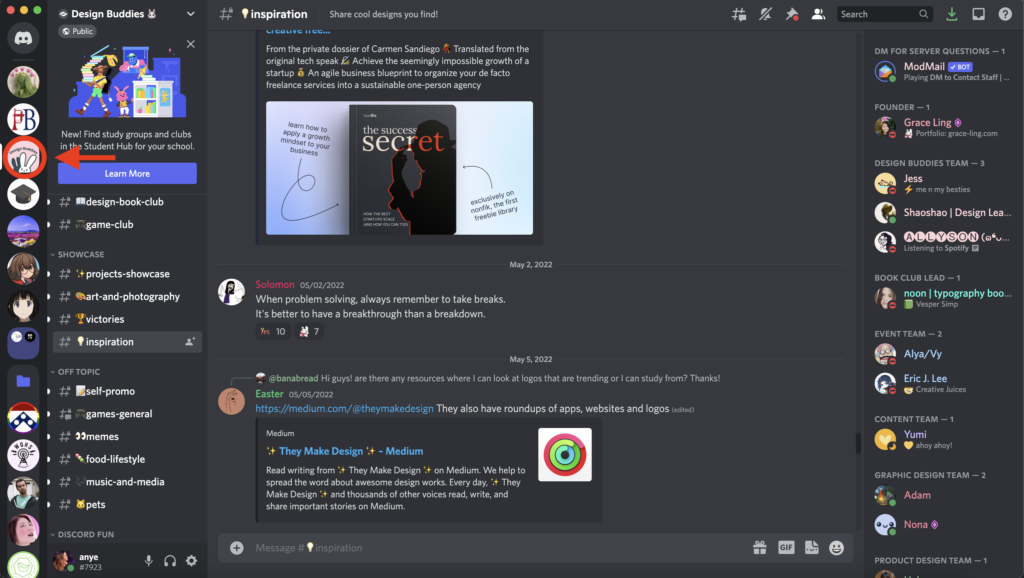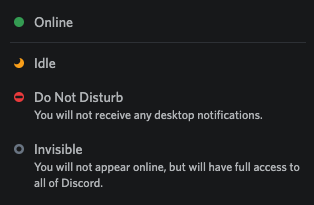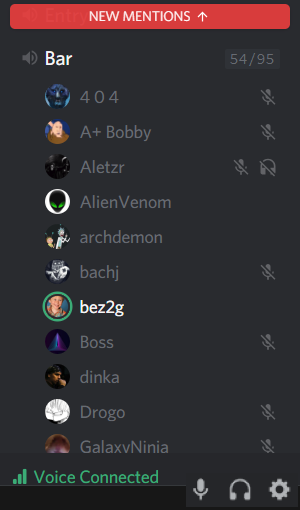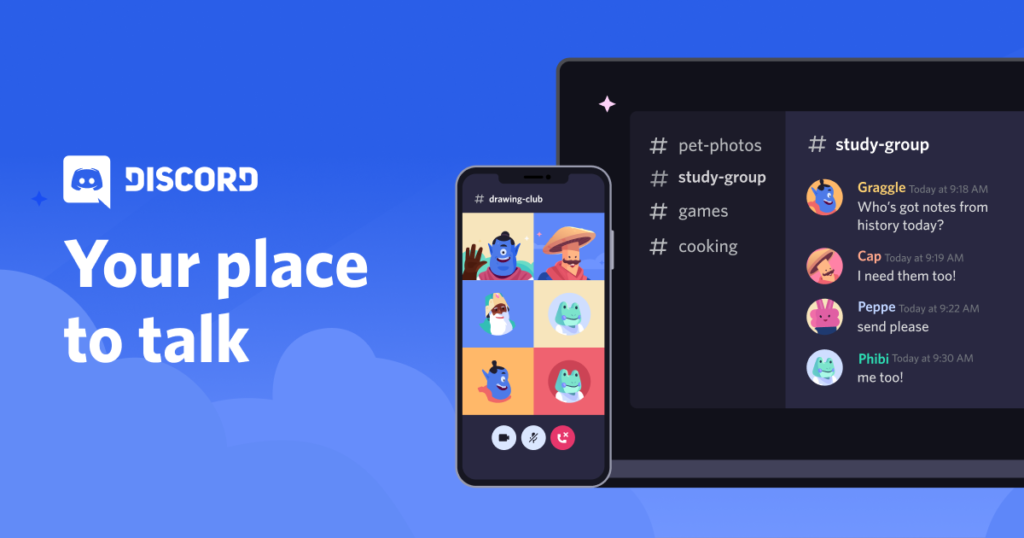Discord is a social platform where people can hop on servers, voice/video call, livestream, and share their gaming and music activity. It currently offers a web app and mobile app. Originally intended to target gamers, Discord has become popular with regular users who have transitioned from similar platforms like Skype and Zoom, as these only afford calling and minimal texting.
Entering a server
Servers are the main affordance that distinguish Discord from other calling platforms. They are private or public forums where people can chat, react to posts, and join group calls. They are clearly discoverable by clicking the large icons on the left sidebar. Doing so generates a vertical grey tab that acts as a signifier marking the current server.

One can also add users to servers. Intuitively we’d type the username to add them, but Discord usernames feature an alphabetical name plus a random 4 digit number (i.e. anye #3048), which are hard to remember. Instead of relying on memory, you can simply click on your user bubble on the bottom left to efficiently copy the username. The hidden numbers after one’s name affords multiple people having the same username no matter their simplicity.
As a gamer-centered platform, the general user conventions are to keep profiles low and confidential. User icons are small, low-resolution bubbles, and generally feature artsy graphics rather than people’s actual photographs. Another feature affording privacy is the lack of read receipts, and only displaying the sender and timestamp.
One problem with the server sidebar is that one could be a part of too many servers as shown above, which is visually overwhelming. Finding a specific server without recognizing its icon would require hovering over each one for its name signifier to appear. A server ordering and sorting feature would be helpful, rather than manually dragging each server in its desired place.

Direct messaging

The direct messages feature shows one’s friends and their current activity status, using four icons as signifiers. Using our knowledge in the world, we intuitively know what the icons mean without reading their designations. For instance, the online green signifier is identical to the online signifier in other social media platforms like Messenger. The moon icon implies resting and is thus appropriate to signify “idle”.

The chat box features a natural mapping as messages are ordered top-down from older to most recent. Specifically, all new messages are typed and sent at the bottom of the screen, and intuitively scrolling upwards reveals older messages. Texts are also laid horizontally in rows allowing for left-right reading. Likewise, signifiers for emojis and stickers are placed towards the right edge as these are naturally placed after one finishes typing their current word.

However, this left-right and down-up mapping features cultural constraints that disadvantages global users coming from regions who read up-down and right-left. For instance, Arabic-speaking regions will read from right to left, and some digital interfaces from countries in East Asia will use an up-down, newest to oldest scrolling.
Group Calling

Discord group calls feature signifiers of who is muted and/or deafened using a microphone and headphones icon, which are useful to know when someone is away. Muting and deafening is discoverable, as their signifiers are conveniently placed on the bottom corner of the channel. Knowledge in the world removes the need to learn what they stand for, as microphones serve for voice and headphones serve for audio in real life. All this is conducive for a high ease of use at first encounter. First time Discord users normally encounter the deafen feature for the first time, as the standard affordance in other calling apps is just muting .
Muting and deafening also feature effective feedback as they use distinct sound signifiers when clicked. Activating and de-activating each of them produce similar tones that are backwards from each other. We therefore hear the more cheerful version when transitioning from, for instance, unmuting to muting. This generates positive psychology as we are encouraging people to remain active and listening in a call. As shown in the video below, these sound effects are heard rather frequently, and fortunately they lack annoyance and are soothing to hear.
